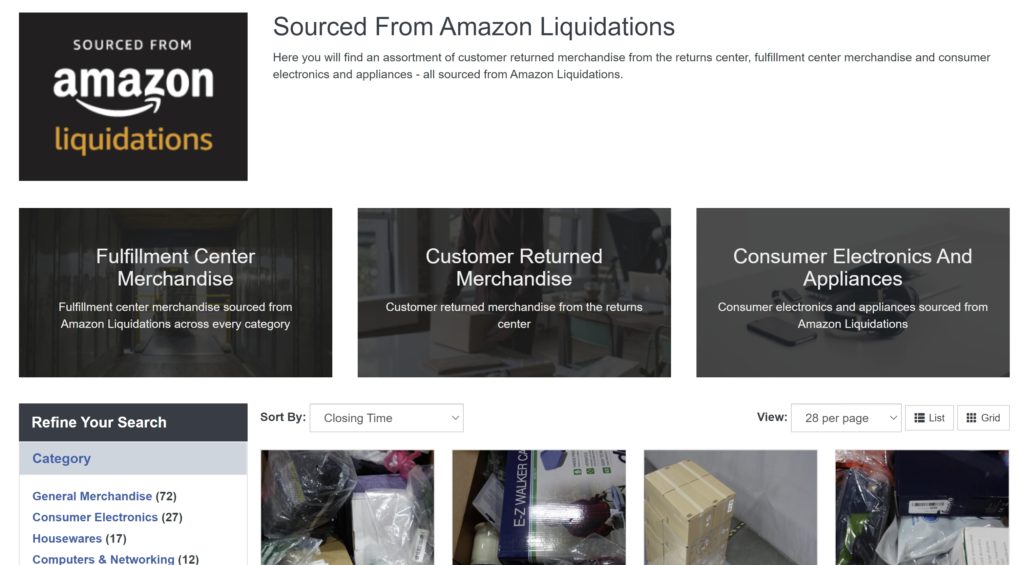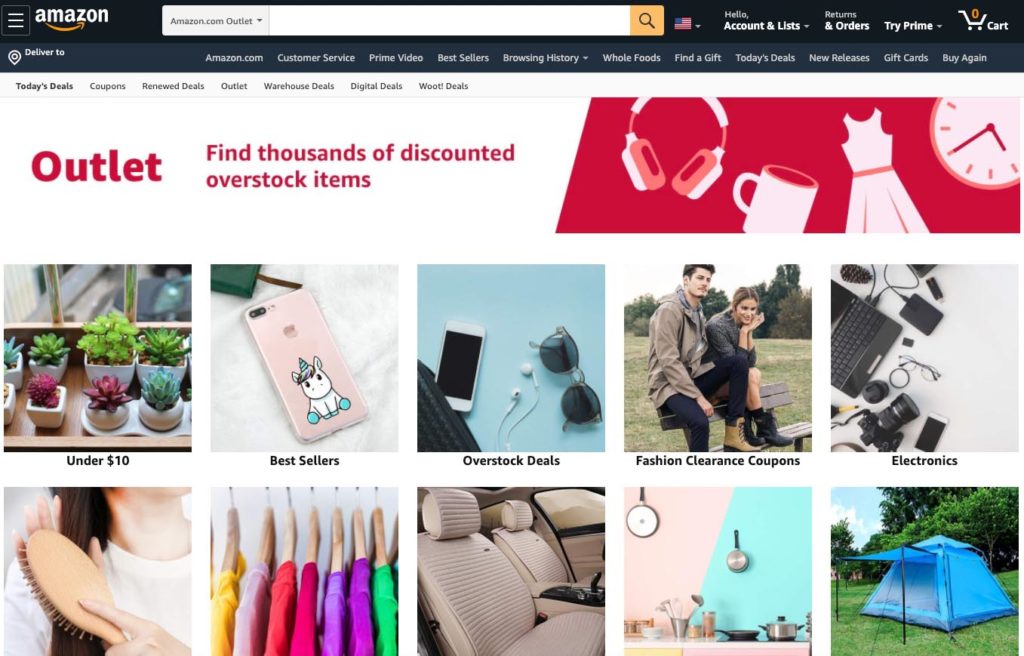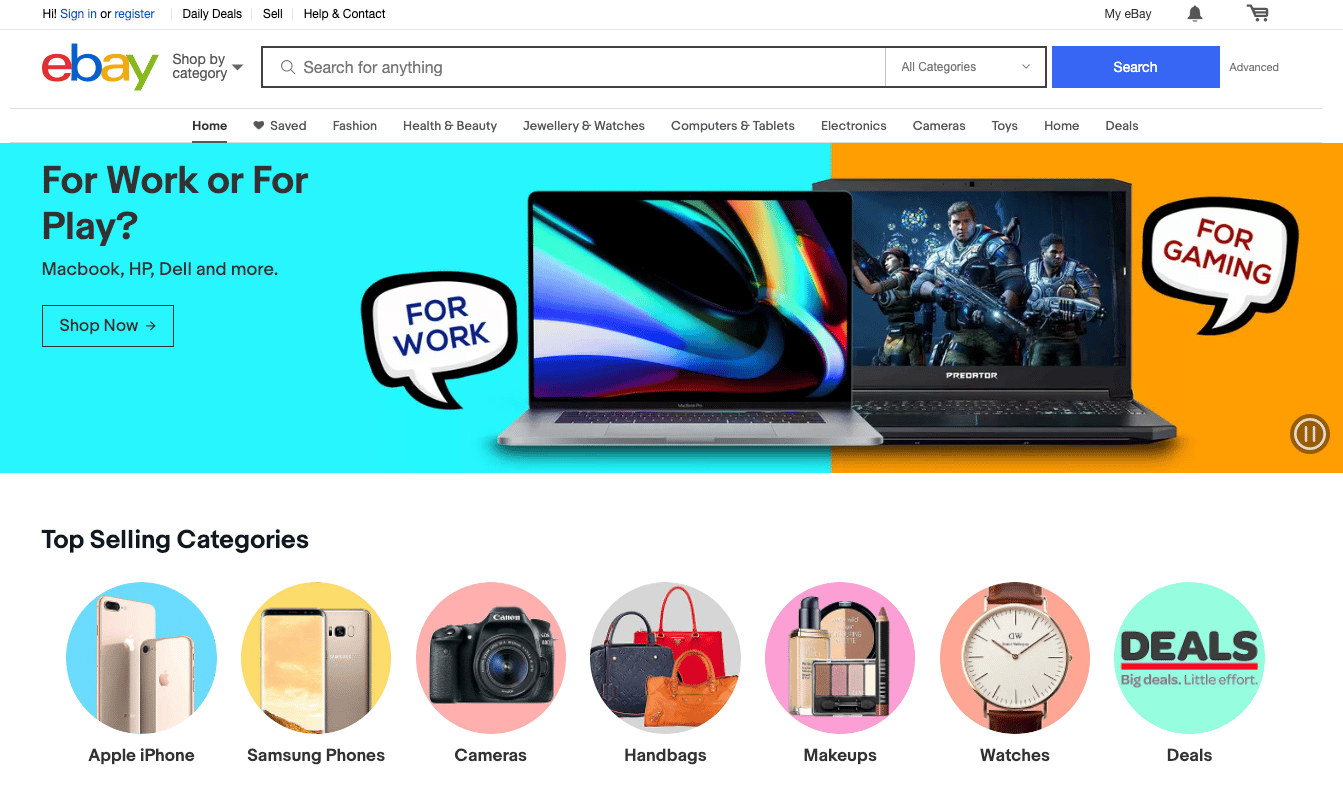7 Great Ways to Liquidate Inventory

One of the top questions we get in our private members' area is this: what's the best way to liquidate inventory?
After you've been selling for any amount of time, you will run into dud inventory that you need to get rid of. Either price competition makes the product no longer feasible, you can longer rank it, or you just need to free up cash flow.
In this post, I'll discuss the best ways you can liquidate inventory.
Disposing of the Inventory is Often the Best Choice
Before we discuss the best way to liquidate inventory, we need to have a bit of a gut check.
Disposing of your inventory is often the best choice. Yup, throwing away all that inventory that you paid thousands of dollars (or more) for.
If you are racking up long-term storage fees, disposing is almost always the best option. If you're still paying regular non-long term storage fees then by all means try and get as much value for your inventory as you can. But as you get closer to the point of long-term storage, you must face the reality that you may need to dispose of your inventory.
You'll normally pay $0.50 + $0.20/lbs to either remove or dispose of your inventory. However, after running significant price discounts, paying selling fees and/or fulfillment fees, storage fees and, most importantly, factoring in your time, you can easily be paying far more than this just to get rid of your inventory. Also, there will often be some tax advantages for writing off inventory as well.
Getting rid of the mental weight of your stagnant inventory will free your mind to focus on other things and that always has a positive ROI. However, entrepreneurs can be irrational creatures, and sometimes we'd rather slowly sell a bunch of inventory while eating up a small fortune in storage fees than clicking the dispose button.
Amazon's Liquidation Program
In the Spring of 2021, Amazon rolled out a new Liquidation Program where Amazon sells your inventory to third-party liquidators and you get, on average, 5% to 10% of your average selling price.
This is a voluntary program you can use in place of disposing or removing your unfulfillable or fulfillable inventory. Amazon already sells your inventory to liquidators lost and damaged inventory that they reimbursed you for (and later found), except Amazon keeps the proceeds and reimburses you at near full value for the inventory. See an example of a third-party reselling liquidate Amazon inventory in the picture below.

Amazon will charge you a weight-based fee PLUS a referral fee (identical to the normal referral fees for that item's category, i.e., normally 15%) on any of the proceeds you receive for your inventory (5% to 10% of the average selling price).
| Item weight | Fee | |
|---|---|---|
| Standard-size items | 0 - 0.5 lb | $0.25 |
| 0.5 - 1.0 lb | $0.30 | |
| 1 - 2.0 lb | $0.35 | |
| over 2.0 lb | $0.40 + $0.20 per lb above first 2 lb | |
| Oversize and special handling items | 0 - 1.0 lb | $0.60 |
| 1.0 - 2.0 lb | $0.70 | |
| 2.0 - 4.0 lb | $0.90 | |
| 4.0 - 10.0 lb | $1.45 | |
| over 10 lb | $1.90 + $0.20 per lb above first 10 lb |
So, for example, if you sell a 1.5-lbs item that normally sells for $10, your potential earnings would be as follows (I'm using a median 7.5% proceeds price, but it can vary from 5% to 10%):
Liquidation Proceeds: 7.5% x $10 = $0.75
Weight Based Fee: $0.35
Referral Fee: $0.11
Net Proceeds: $0.29
So on a $10 item, liquidating it via Amazon would get you approximately $0.29, or 2.9% of the average retail selling price.
This might sound terrible, but it's not atypical of what you'll normally profit from most liquidators who will generally give you between 1% to 10% of the retail value of the merchandise (and often, you'll be responsible for freight to them). Also, if the alternative is disposing of the item, in which Amazon will normally charge you $0.25+, you will actually be ahead.
It's important to note that part of the buyer's agreement who is purchasing the liquidating your inventory is that they are forbidden from reselling it on Amazon. However, they can sell it through other ecommerce channels such as eBay or through other means.

To create a liquidation order, you simply create a removal order and select Liquidations as your method of removal.
Should You Use Amazon's Liquidation Program?
If you've exhausted all other methods of attempting to liquidate inventory through your own means (see the section below) and you're facing the option of disposing of your inventory, then using Amazon liquidations is a good bet. The percentage of your inventory that you receive from Amazon will almost certainly be more than you would receive if you're trying to sell directly to a liquidator.
While the company does forbid buyers of your liquidate inventory from reselling on the platform, it is not impossible that eventually, some of this inventory may make its way to Amazon. Moreover, even if it doesn't make it to Amazon, if your customers can find refurbished/used versions of your item on eBay or other websites, it could have some impact on your sales on Amazon, although it will likely be pretty minimal.
Other Ways To Liquidate Inventory
Now here's the the other gut check: ultimately, you're the best liquidator of your inventory. The majority of the time, no one else in the world will be able to sell your stagnant inventory for as much as you can. You're going to be paid accordingly for this fact.
With that in mind, here are some ways to consider when liquidating your inventory:
- Make a New Merchant Fulfilled SKU. Make a new Merchant Fulfilled ASIN on Amazon with a bulk quantity bundle and at a lower price. If it sells, do an MCF order (i.e., you don't need to relabel or send items in).
- Sell in bulk on eBay. Like above, make a listing for multiple items and sell in bulk. You can ship with multi-channel fulfillment directly from Amazon.
- Amazon outlet deals. Amazon runs an outlet section of their website specifically for reasons like inventory liquidation. There's a bunch of catches to being eligible (such as having recent sales history) but if your item is eligible, it can have a similar effect as a Lightning Deal.

- Run a social media promo code. This is available from within promotions in Seller Central. Do a 50% discount AND select “Share with: Amazon Influencers and Associates.” There's a small chance Amazon will share it with their LARGE network of influencers and you will get some virality to your coupon.
- Enroll it in Amazon VINE. This will get you some “free” sales velocity and potentially give the product a second chance at life. Your inventory will be given away though, and you will have to pay the applicable FBA fees.
- Liquidation auction. There are a number of auction services that specialize in liquidating inventory. The most popular is bstock.com. Expect to get pennies on the dollar for your returns and to pay considerable fees to the auction houses themselves.
- Cold call other businesses. Cold call or email a few related businesses to see if they will buy your inventory at a significant discount.
- Donate to charity. The tax advantages of this method will vary immensely by jurisdiction. In many jurisdictions though, you may actually receive no taxable benefit from donating inventory. However, you will receive karma points no matter what jurisdiction you're in.
Pull the Band-Aid off Quickly
Now a word from the wise (or at least someone who has made the following mistake far too often).
A lot of people prolong their pain and store their items at a 3PL and rack up $25/pallet monthly storage fees (or more) and eventually dispose the inventory (or worse, slowly selling the inventory at a loss). 3PLs are full of these clients. Don't be one of these people. At some point, you need to move on from your inventory.
Conclusion
Liquidating inventory is one of the harshest realities of being a retailer, and most of us have a few sad heartbreak songs about losing money on dead inventory. I have a great story (OK, not so great) about mistakenly ordering $10,000 in marine products for US boats that were compatible only with European boats. (But after over 3 years, I think I found every American with one of these European boats!)
You can take some comfort in knowing that you're not alone. Every entrepreneur loses money on inventory at some point, and even the largest retailers in the world have a discount bin or two in their stores. What's your sad heartbreak inventory story? Let me know in the comments below.





Hi,
I hope this email finds you well. We want to liquidate our product. Product details are mentioned below. Kindly provide the valuable price to proceed with our deal for liquidation.
Details:
Product Name: Analog Inflator Gauge
Package Dimensions: 10.87 x 6.1 x 1.81 inches
Weight: 14.5 Ounces
Country of Origin: USA
Total no. of units: 500
I await your immediate response.
Thanks.
Hi Dave. What’s your advice on how to setup the Refurbishment and Liquidation options in the Automation settings? By default, I have Refurbishment enabled and Liquidation disabled. Thanks.
If you enable liquidations, you still have to manually select products for liquidation (it won’t do it automatically). Our returns we have returned to us by default; We only use liquidations when we need to dispose of inventory fairly quickly.
Great post Dave and Mike! I had this exact problem several years ago and ended up donating it to charity and washing my hands clean and done with it!
Our losses is the charities gain :)
Thanks for this Dave! As always you are spot on with addressing this topic on inventory. We’ve been fortunate not to have too much excess inventory but their is definitely enough to be burning up that CPU in the back of the head wondering what to do with it.
Glad it helped :)